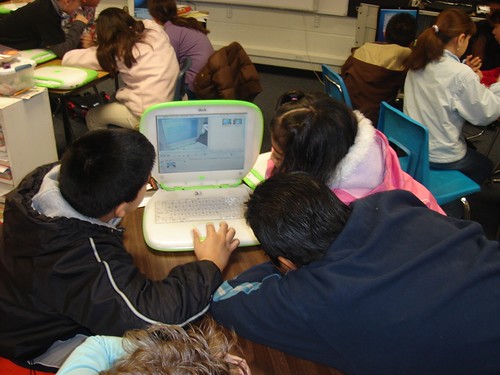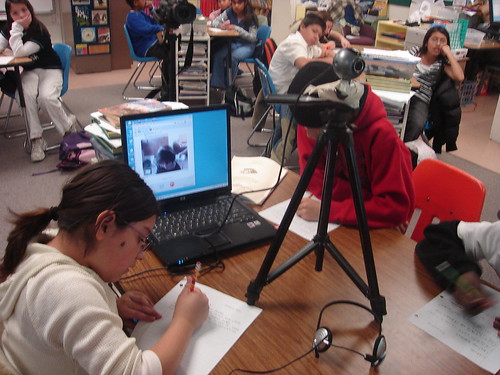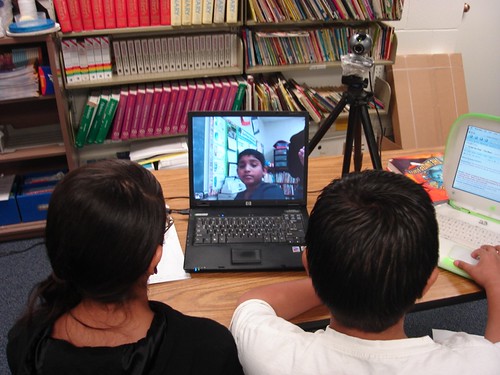NOTE: This post was originally published at the Voices from the learning revolution blog.
“Everybody in this room understands that our nation’s success depends on strengthening America’s role as the world’s engine of discovery and innovation. And that leadership tomorrow depends on how we educate our students today—especially in science, technology, engineering, and math.” (STEM)
President Obama to a gathering of CEOs, scientists, teachers, and others. September 16, 2010
STEM is the new education buzz-word, even the president has been talking it up.
I’d have to confess though that this attention also worries me. I’ve been to conferences where everything on the vendor floor displays a sticker announcing how — whatever it is — it’s “aligned to the Common Core State Standards and STEM!” I’ve even visited a school that claims it is a “STEM Academy” because (it brags) teachers are mandated to do at least 15 minutes of science EACH DAY!
If any of this sounds familiar, it’s the same approach and attitude that led to technology getting a shady reputation in education. Another “big idea” that is inevitably reduced to a subject or activity — something teachers must spend another chunk of precious class time on. It’s typical education “reform.” Instead, what we need to do is transform. STEM, done right, can help make that happen.

STEM (Science, Technology, Engineering and Mathematics) is not a separate subject, and you don’t “do” STEM just by doing any one of its pieces. One of the reasons I took my current position was that I recognized that STEM education has promise in leading us away from each subject only having a singular focus — its own chunk of time in the schedule. STEM demands that we teach lessons and pursue projects that connect all the subjects represented in its acronym. In this day of narrowed curriculum, that is a very important distinction!
The STEM connection
So how does STEM education differ, and what does it have to do with connected learning? One way to think about STEM is in the context of that desirable learning strategy we hear about now and again: “taking the time to go deep.” One of the big complaints about NCLB “reform” has been the narrow “surface” learning its accountability mechanisms have produced as a by-product. STEM provides in-depth experiences that students share and can therefore discuss, explain and argue about.

A STEM unit often starts off with a science activity that introduces the concept and leads to the initial research. Besides library books and internet searches, that research should now include communicating with experts. Email, blogs, chats, video-conferencing and other social networking tools and strategies not only add to the learning by involving advisors and collaborators, but teach students how being connected should be part of their learning process.
In addition, a true STEM experience involves the “E” – Engineering. Students should be building something or improving a design. Solving a problem through building and improving involves trials and testing things out, in other words, collecting data, the “M” or math component of STEM. By analyzing performance data, students can make adjustments to their design — quantifying what is really best or most efficient.

Students working in small groups will learn as they note differences in design and efficiency between their creation and those of other groups in the room. And we can up the “connected learning” factor by having them partner with peers beyond the room — students anywhere in the world who are working on the same or a similar activity.
Taking it one step further: what if the groups our students are working in include students in other locations? What if the groups in my class in Nevada have virtual members who are in British Columbia or Scotland or India?
Now the challenge of STEM collaboration takes on new dimensions … staying in communication across time zones, being responsible for getting your part done, being able to share your learning in a way that is understandable to students in different contexts and cultures. Will connected teams use blogs? wikis? email? Google groups? Dropbox? Live meeting spaces? Weighing the advantages and disadvantages of various combinations of virtual partnering is all part of the learning.
Now imagine connecting with an expert in the field you are working in… asking questions, sharing insights, getting tips on design, learning from their experience. All this connectedness can be a huge asset; done well, it can become a vital and very “sticky” part of the learning.
Expanding STEM across the curriculum
As the overall project continues, the potential connections afford many opportunities to vocalize and clarify thinking, as well as the motivation to do quality work because you have authentic audiences. The writing and communications work should also be deep. This can involve creative writing and sharing experiences through stories, poetry, music, video, art of various kinds (STEAM!), and more.

Blending STEM with “connected classroom” strategies is a powerful learning model — a highly active learning model. For this to work well in schools, however, we have to have innovative thinking, teacher autonomy and flexibility in scheduling. These essential components of “going deep” with teaching and learning have been eroded away in the last decade. If we are truly going to integrate and embrace STEM education and innovation, we will have to revive them.
The possibilities of authentic, globally connected STEM projects that flatten curriculum walls, engage students through curiosity, and ignite their natural desire to solve challenging, worthwhile problems is why I am personally promoting the STEM concept. I see it as a way to bypass the most misguided aspects of current “reform” movements while promoting — even requiring — critical and creative thinking and true innovation.
Learning is messy!













